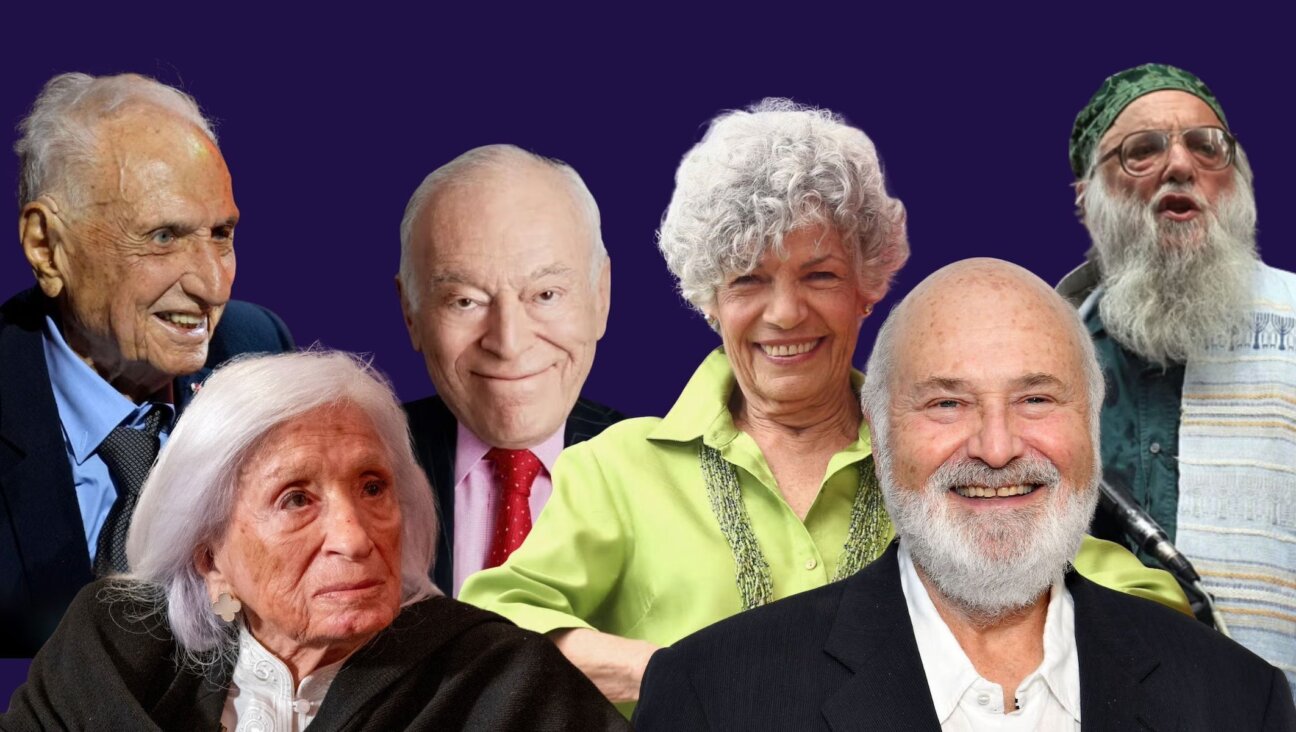A Jewish snowman movie would have made a lot more sense than Netflix’s ‘Hot Frosty’
We have a whole mythology about reanimating natural materials — the golem!

Who sculpted such a weirdly buff snowman? We’ll never know. Courtesy of Netflix
The first Christmas movie of the season has landed on Netflix, just in time for, uh, Thanksgiving.
Hot Frosty is about a hyper-realistic muscular snowman who comes to life when a small-town widow — played by Hallmark veteran Lacey Chabert — puts an apparently magical scarf around him. He spends much of the rest of the movie trying not to melt indoors while helping the locals. (Eagle-eyed readers will note that the title is a pun, combining references to a snowman who has literally become hot and begun to melt, but also to a snowman who is hot, you know, sexually.)
The idea of a snowman coming to life is, of course, not a new one; Frosty the Snowman, both the song and the animated short, feature a snowman magically playing with the locals before melting. The magical snowman is enough of a classic winter trope that even Disney hit Frozen has one. Hot Frosty takes these child-friendly favorites and adds a heaping scoop of innuendo.

But it also doesn’t make much sense: Why did the scarf bring the snowman to life? Why, once he came to life, did he know about clothes and money and the English language, but not forks? Who sculpted him, and didn’t they notice that their creation had mysteriously disappeared? And what turned him human after he melted? (I’d have given a spoiler alert, but we all know these movies have happy endings.)
Admittedly, Hallmark-style Christmas movies are not expected to have lore. This isn’t the Marvel Cinematic Universe or Lord of the Rings or even Harry Potter; no one is hunting for Easter eggs or plot holes. The point is schmaltzy romance and the magic of Christmas, all achieved with maximum efficiency in about 90 minutes.
Still, most movies of this genre make at least a passing attempt to give characters motivation. And if there’s any magic — as there was in last year’s Hallmark Hanukkah installment, which featured a magical dreidl — there’s at least a modicum of backstory. (The dreidl was a family heirloom that’s been working its magic for generations to help people find love.)
I don’t mean to be a grinch — these movies are not meant to be great works of art, just comforting nuggets to put on in the background while you wrap presents or, I guess, baste turkeys given that it’s mid-November. I’m just saying that the movie could have, perhaps, benefited by taking notes from the Jewish tradition of animating natural materials scooped off the ground. I’m talking about the golem.

Jack — that’s the snowman’s name — already has some golem-like qualities. He performs physical labor for the townsfolk, repairing roofs and windows and installing light fixtures while a rapt crowd of elderly ladies stare at his muscles. And like the golem, which is brought to life by a magical Hebrew word placed in its mouth, Jack is brought to life by a magic object.
But Jack’s magical scarf is simply a gift to the widow from her friend who feels sorry for her. No one knew the scarf was magic, nor do we ever find out where it came from. There’s not even the thinnest explanation. The golem, meanwhile, has a whole history; the word works because it is godly, and the rabbi is able to create him because of his spiritual prowess. There’s a logic to the magic. (Though, to be fair, the golem eventually goes on a destructive rampage, while the hot snowman just goes on vacation to Hawaii once he’s unmeltable.)
If Hot Frosty had been a Hanukkah movie — most streaming platforms seem to make one per year, amidst the Christmas glut — there would have been so much more lore to mine. There could have been a brief reference to how it’s not actually that crazy that a snowman has come to life to serve the needs of a nice Jewish woman; after all, it’s happened before, in ancient Prague. It’s just enough to make the move feel a little grounded.
Christmas is, of course, not a Jewish holiday, and Hot Frosty is entirely devoid of even the slightest hint of Hanukkah happening in the background. I’m just saying, I guess: Jews are better at holiday magic. And Christians get so many holiday movies — we deserve the hot snowman golem movie. Instead, we’ll probably get another stilted Hanukkah movie that trips over itself explaining what a menorah is.
















